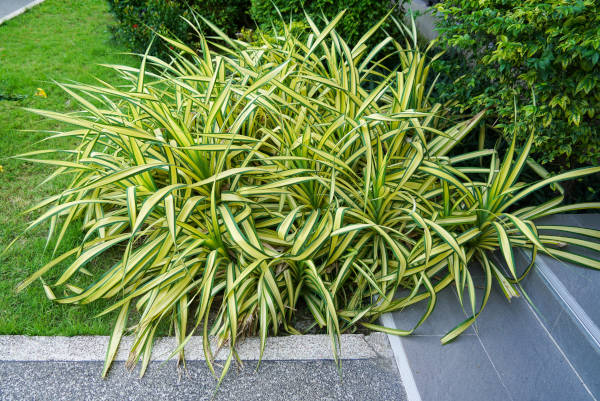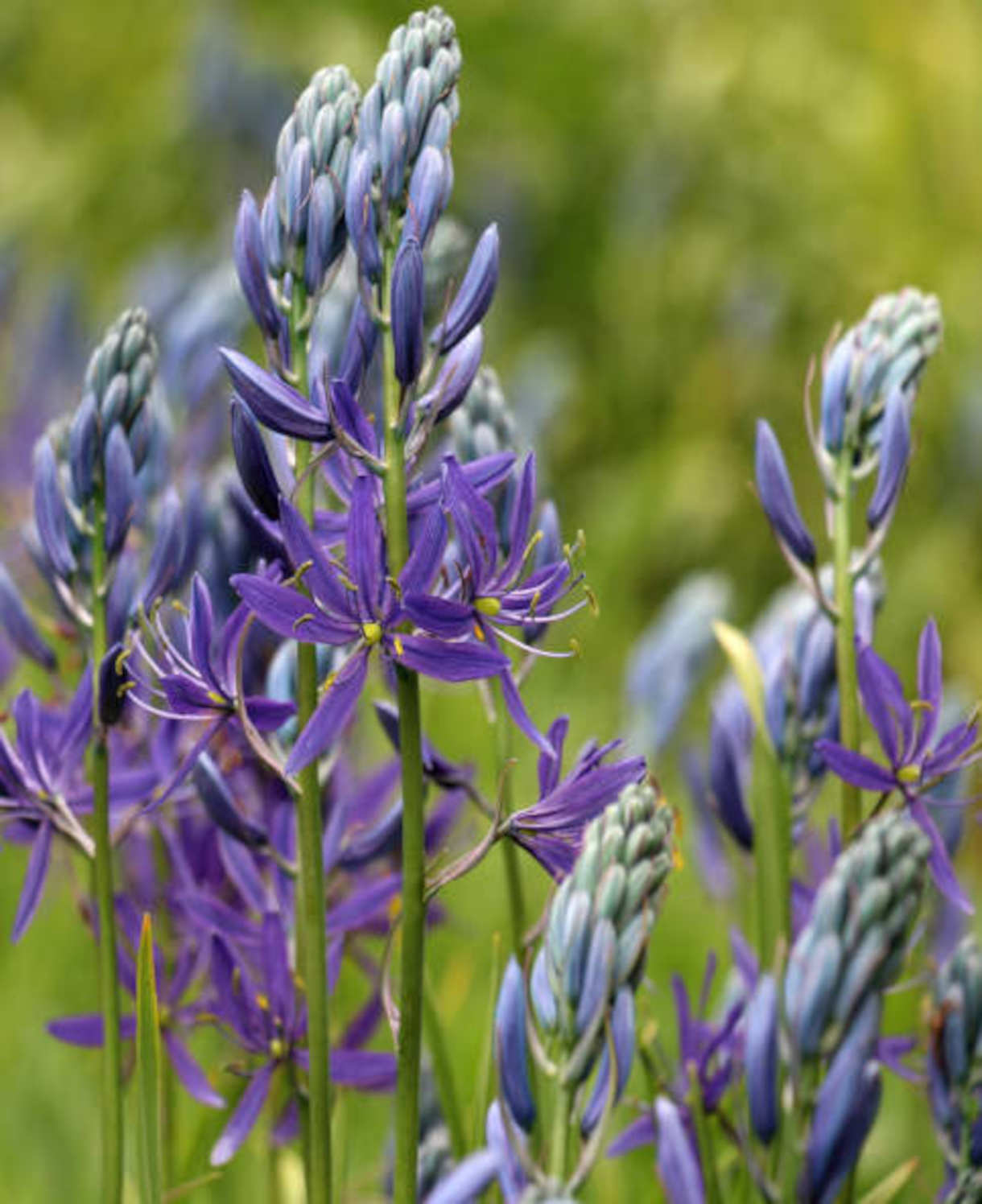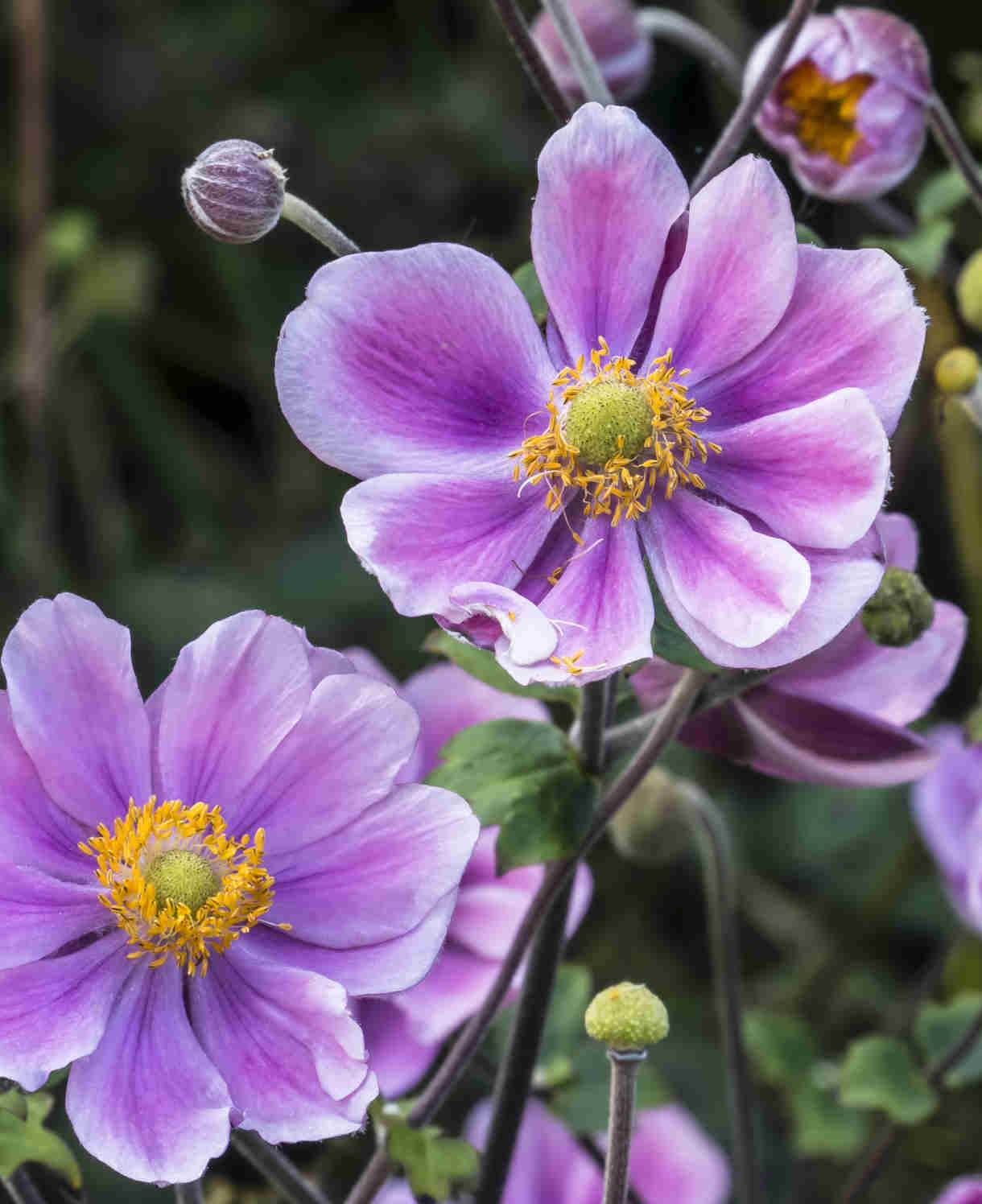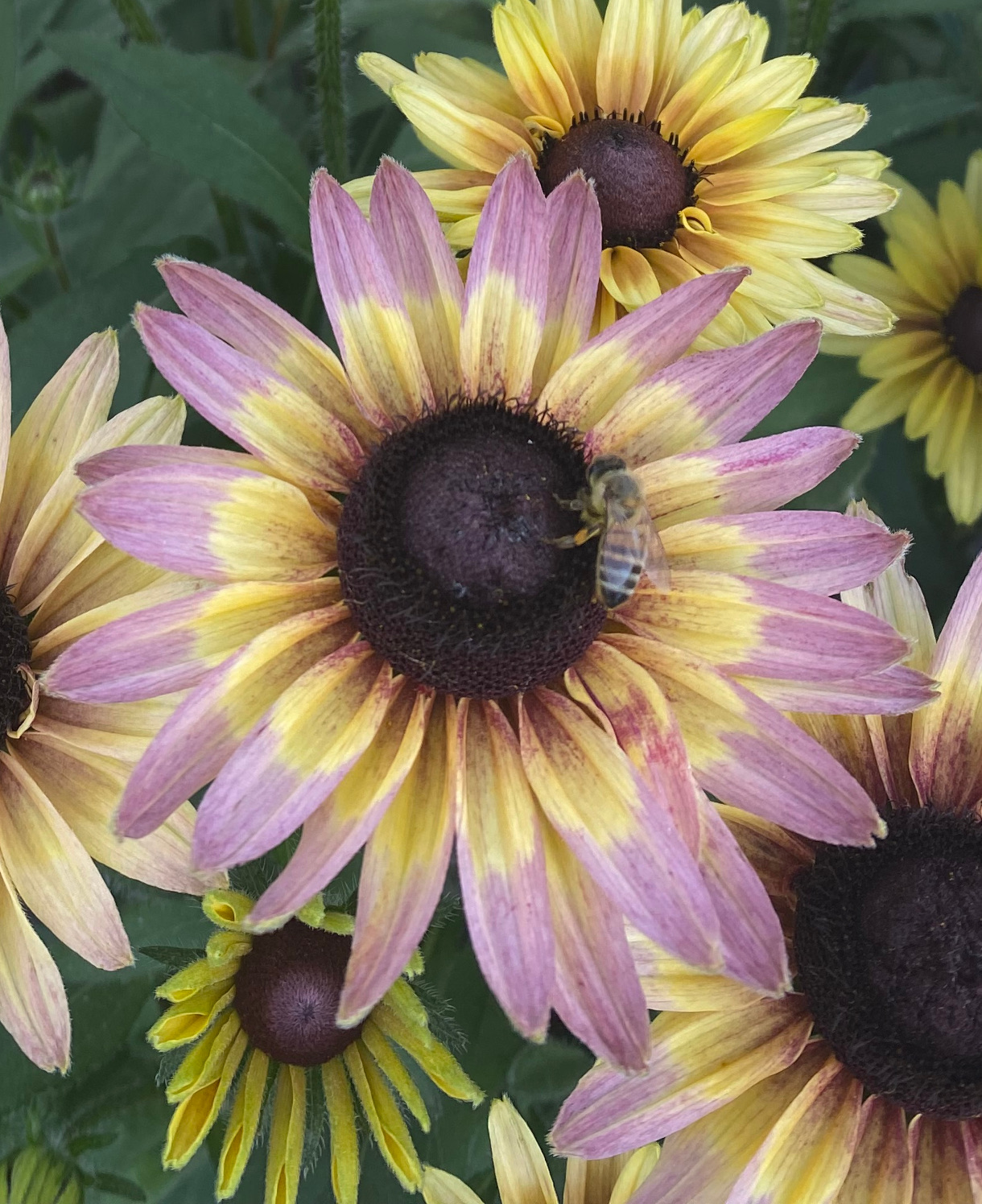How to grow Carex
Often known as sedge, carex is a vast genus of 1500 or more species which can be deciduous or evergreen (though at Hayloft we currently stock evergreen only). Grown for its variegated and colourful foliage, carex is popular among gardeners for its easy, unfussy nature, and is often considered to be one of the ‘workhorses’ of a garden.
Frequently mistaken for a grass, carex is in fact a tufted perennial with grass-like foliage. This distinction is important when it comes to choosing a planting location. Whereas true grasses generally have a need for full sun and well-draining soil (often originating from open, sunny places), carex, as a genus, is altogether far more varied. Most species are happy in damp, partial shade, and some able to tolerate extremes of either wet or dry. This versatility sets them apart from grasses and means there can be a species found for nearly every site in the garden.
Carex can be loosely split into three groups. Asian species tend to be variegated and tolerant of a fair amount of shade, often used to brighten damp, shady spots in the garden. New Zealand species generally come in bronze, reddish, and caramel tones, and can take hotter, drier conditions. North American carex are less commonly used at present, though this seems set to change. They tend to cover ground easily and can be an excellent alternative to the traditional lawn, particularly in shady locations.
Useful tip: a simple way of identifying carex is by its distinctive, triangular stems. Memorising the following rhyme about stem shape is an easy way to tell the difference between three very similar-looking garden plants:
‘Sedges have edges, rushes are round, grasses are hollow down near to the ground’.

Key Information
Position
Soil Conditions
Hardiness


Where & when to plant Carex
For best results, plant in autumn or spring. An autumn planting is suitable for those gardening in ‘mild’ conditions. (Broadly speaking, this is the southern half of the UK). For those liable to very cold winters or waterlogged ground, it is best to wait until spring. (This is generally the northern half of the UK, or anyone gardening on heavy, clay soil).
Planting can be carried out at other times throughout the year providing a watchful approach to watering is taken until plants are established.
Carex is a hugely versatile plant, well suited to many styles and situations. It combines well with ornamental grasses and summer flowering perennials, for a prairie style display, or can be used as a contrasting texture in partially shaded woodland planting. Carex can also provide year-round, low maintenance interest as a focal plant in a container display. Water-loving varieties can be used in pond margins and bog gardens.
How to plant Carex
- Clear the area of weeds
- Dig a planting hole
- Place the plant in the hole
- Backfill with soil and gently firm in with foot
- Soak well with water
- Mulch around the base
- Continue to water well until fully established

What to plant with Carex
Try using variegated carex to brighten up a damp, shady spot. This looks spectacular planted en masse with spring flowers such as fritillaries, camassia and Candelabra primroses.
Perhaps mingle with other shade plants, such as ferns, hostas, Japanese anemone, and lily of the valley, for a rich, jostling display.
Use bronze-leaved varieties among grasses and perennials for a sun-bleached, prairie-style display. Try stipa, rudbeckia, veronicastrum and sedum.



How to care for Carex
Pruning and Deadheading
The occasional combing out of old foliage with fingers or a hand rake is all this evergreen requires to maintain a neat appearance.
Watering
Water throughout the first summer, until established. After this, no additional watering should be required apart from in prolonged hot or dry periods.
Carex grown in containers can dry out quickly, so should be watered regularly during the summer.
Cold Protection
Carex is fully hardy, requiring no cold protection.
Pests and Diseases
Carex is generally problem free, though in some cases (usually when a plant is stressed) aphids may infect stem bases. Use a soap spray, or moderately strong jet of water from a hose pipe to blast these off.
How to propagate Carex
The quickest and easiest approach to propagating carex is to lift and divide established clumps in late winter or early spring (every four to five years is ideal). As well as providing new plants, this also maintains the health and vigour of existing specimens.
- Choose a day when the soil is not frozen or waterlogged
- Dig the plant out of the ground
- Shake off any excess soil
- Separate the plant into sections using either swift, cutting blows with a sharp spade, or two forks inserted back-to-back with tines touching, handles then pushed together to prise the plant apart
- Discard old, damaged, or surplus pieces, keeping healthy, vigorous material
- Replant or pot up selected pieces as required
- Water well until fully established.
Common Carex Questions:
I misjudged the placing of my carex, and now it is too big for the space. Is there anything I can do?
If needed, carex can be pruned back, by up to 50%, during late spring/ early summer. This will maintain a smaller, neater mound than if left to grow unchecked.
Alternatively, lift and replant somewhere more suitable in late winter or early spring.
Does carex flower?
Yes, it does, usually in mid to late summer, though flowers are mostly insignificant. Carex is generally grown for its foliage.




